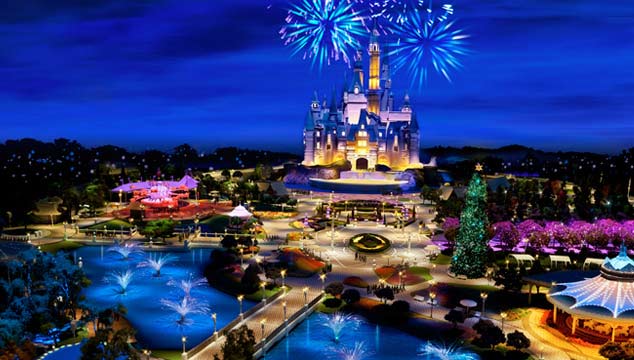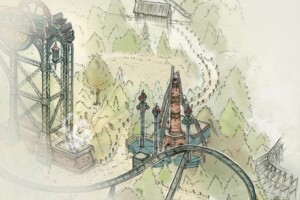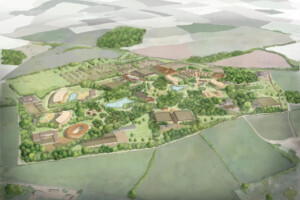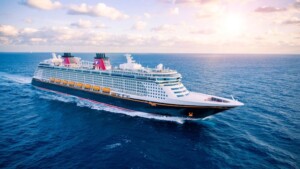We’ve completed numerous projects in China over the past several years, across 1st to 3rd tier markets, on developments as diverse as individual dark rides and indoor edutainment attractions, and in markets as far north as Changchun, and as far south as Sanya.

What follows is a primer of four main points we emphasize for clients, both foreign and domestic, as an introduction to the Chinese theme park market.
A Park Database Feature
By Wonwhee Kim, Founder of The Park Database (left)
As always, in order to preserve the confidentiality of our past and present clients, only public sources have been used here as data sources for illustrative purposes.
1. You will find the entire range of location-based attractions in China. Staggering growth of the real estate markets, driven by increasing urbanization and nearly double-digit real income growth, has fueled investment (and speculation) in a wide range of attractions.
From the Happy Valley chain of ride parks, to the dark ride chain of Fantawild, the spectacular show extravaganzas produced by Songcheng, to the homegrown version of indoor edutainment attractions in MyRules, the market in China is constantly evolving by importing models from overseas as well as growing them from within.

2. Despite the obvious demographic advantages (megacity clusters, 1 billion+ population, double-digit income growth), the largest Chinese parks are still largely businesses that generate topline revenues that max out between $30 to $100 million USD. That might seem like a large range, but consider that Ocean Park in Hong Kong generates revenues of over $200 million USD, and Hong Kong Disneyland is over $600 million in revenues. These parks are not in the same tier as mainland parks.
In other words, the revenues generated in 2012 by Hangzhou Paradise (roughly $20 million), a representative Chinese theme park, were equivalent to the revenues of a high-performing Kidzania. And the major branded parks in China generate revenues that are less than those of the average Legoland.
With top attended parks generating between 2 and 4 million in attendance annually, these translate into per capita expenditures of between $10 and $30 US dollars.

For the broad range of attractions in China currently, the question remains whether there can be a product that generates both attendance and/or per capita expenditure numbers at a first tier level.

Is there a product that can generate either higher per capita revenues, or volumes of attendance at the international standard level? This is the challenge for designers and developers alike.
Disney’s investment in Shanghai is a bet that there is such a product (their own), and judging by the revenue figures generated at Hong Kong Disneyland (50% of whose visitors are from the mainland), that seems to be a reasonable assessment.
3. While it is commonly understood that many Chinese theme parks rely on peripheral land development to be profitable investments, overgeneralizing all Chinese parks as land speculation schemes is a gross simplification that obscures the true reality.
First, we need to understand the raw economics. It is true that as in most areas of the world, residential land uses in China are far more valuable than attraction-related land uses. A glimpse at the OCT Group’s 1H 2013 investor presentation reveals the extent to which that is true in a city like Chengdu.

OCT sold approximately 40, 000 square meters of residential product at nearly 12, 000 RMB/sqm. Moreover, that was 40, 000 out of a total available area of 1.2 million residential square meters. In contrast, the theme park’s built area generates about 200 RMB/sqm, per year.

This contrast in value between entertainment and residential land uses in urban areas necessarily gives rise to conflicted incentives. Any perceived or real under emphasis on attraction development in China arises from this point.
However, when total costs are factored in, theme park operations may wind up being just as important as residential sales to developers. As an example, consider the Haichang Group, an operator of Seaworld-type marine animal attractions around China. Its recent prospectus shows that in 2012, its profits from the operations of its theme parks was three times its profits from property development. On a net profit basis, the disparity was even larger – 71 million RMB to 8 million RMB!

This is not to say that property development is not an important business to Haichang. Indeed, in 2010 this relationship was reversed, with net profits of park operations of 55 million, and a figure more than twice that amount generated from property development.
What this reveals, however, is that Haichang’s theme park operations are as important as, (if not more than) its property development operations. Haichang, in other words, is a diversified company – and the theme park business is one of various businesses that are very important to its bottom line…much like Disney and Comcast in the United States.
And on the opposite end of the spectrum, there are even operators such as Hangzhou’s Songcheng Group, which is in the business of developing and operating both show extravaganza-based and outdoor park-based attractions.
Songcheng’s revenues are almost completely derived from theme park operations, with 2013 revenues from its four theme parks (Sanya had only been open for 2 months) accounting for over 90 percent of its total topline.
And with an enviable operating profit margin of over 50 percent, it is difficult to say that the company has not developed a formula that works.

4. In observing the Chinese attraction industry, it’s important to note that the Chinese attraction market is a relatively new business.
Happy Valley Shenzhen, widely considered the first ‘major’ theme park still in operation, opened in its present state in April 2002, only one Chinese zodiac cycle ago. In the past decade, there has been quite an explosion in theme park developments, which has coincided with China’s rapid income and urban population growth.

Contrast this with mature attraction markets in the rest of the world, where new theme park development has been either second-gate oriented or nonexistent – not to speak of the costly failures.
5. In summary, we believe that the pace of development in China is rapid. Developers are adapting very quickly to market successes and failures, and constantly changing conditions.
Chinese theme park or attraction bashing is quite the sport in many quarters, but we would like to encourage the view that these products represent only the first prototypes of an evolutionary process of the attraction landscape. What this means is that there is room for imagination and growth both on the part of developers and designers. Real estate developers in China have proved themselves to be quite savvy into latching onto products that make economic sense, either through emulation, or raw experimentation.
The Chinese theme park landscape is constantly changing.
Charts: Pro Forma
Image: Kind Courtesy Shanghai Disney Resort














